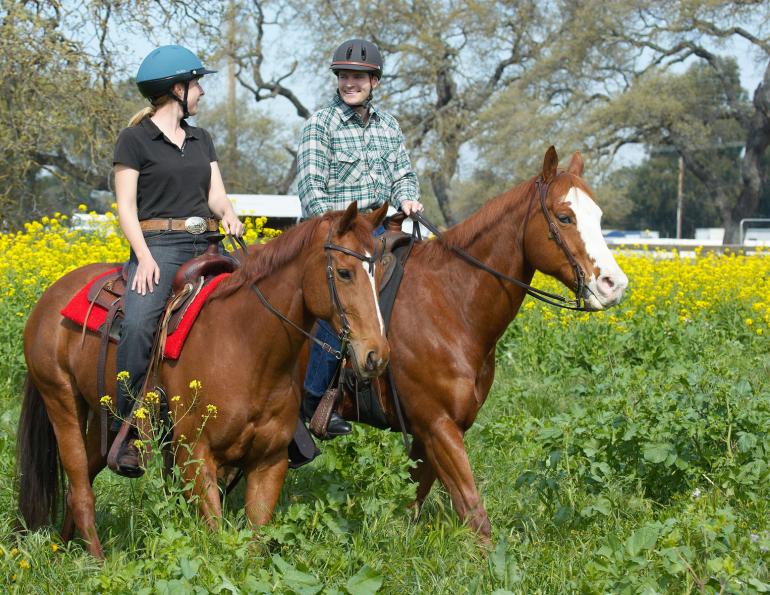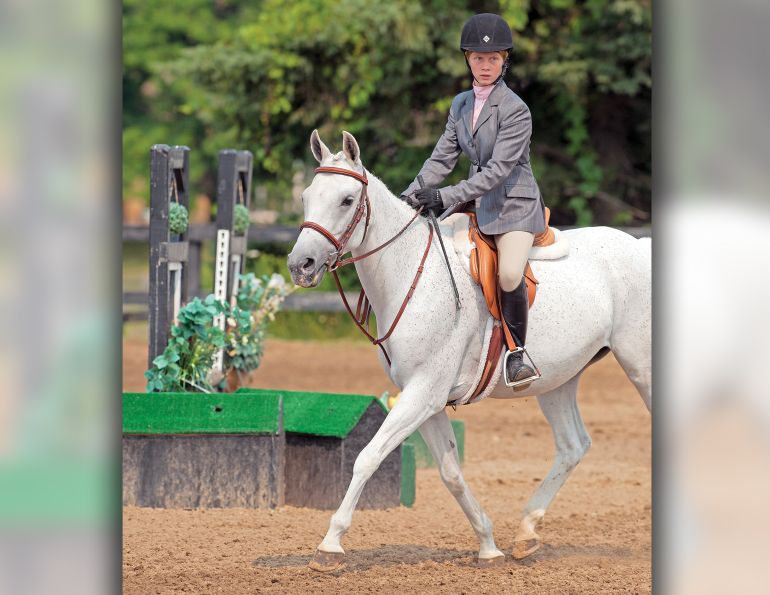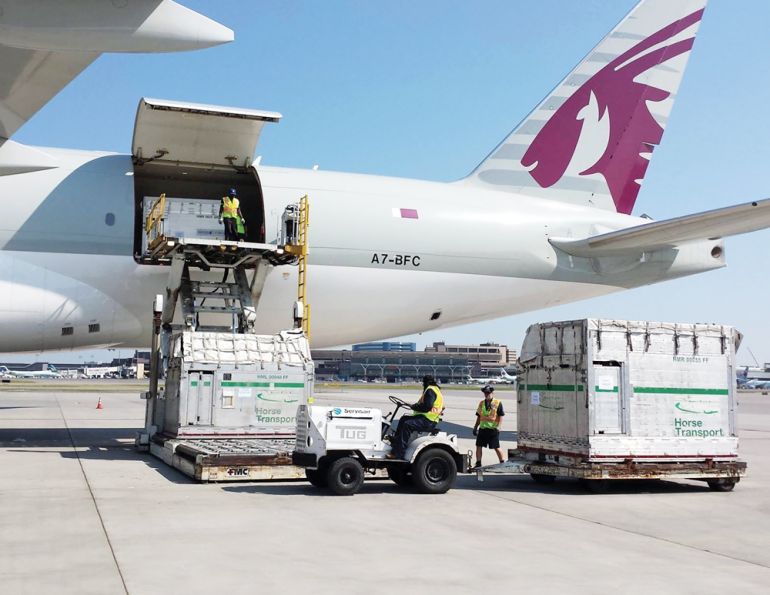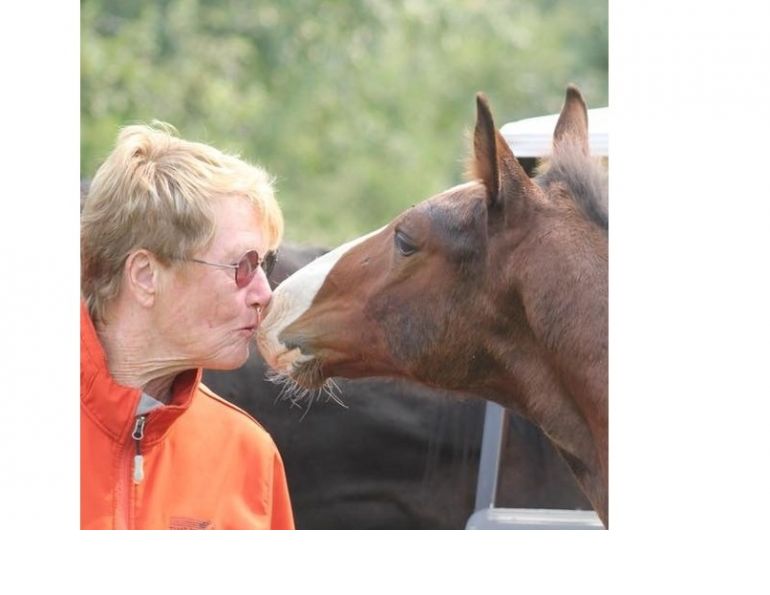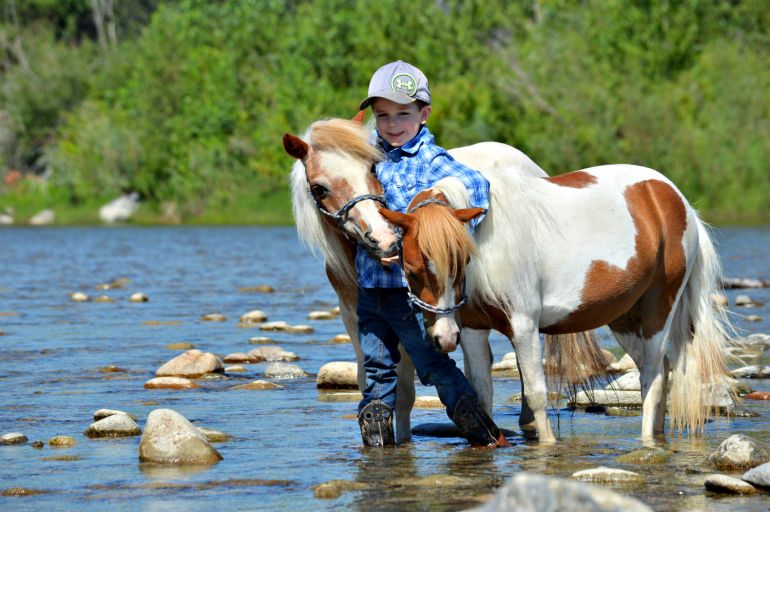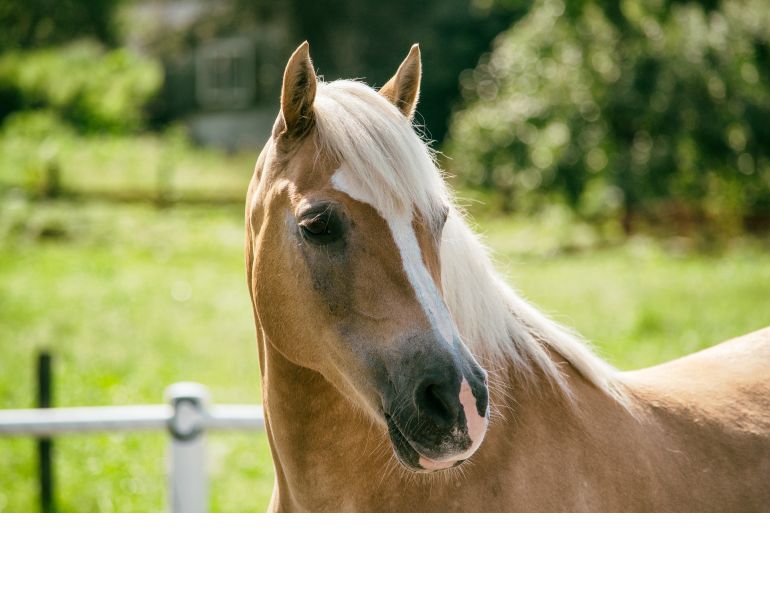This article was orginally published in October 2012. Some details may be outdated.
By Margaret Evans
- What does it cost to keep a horse today?
- Are more people entering the horse industry than leaving it?
- Which sectors of the riding community are growing?
- Are horse values still dropping?
- Is the horse industry sustainable in today’s economy?
The 2010 Canadian Equine Industry Profile Study – The State of the Industry, was commissioned by Equine Canada and authored by Vel Evans of Strategic Equine Inc. It was conducted to assist in planning for the introduction of a national traceability system for the Canadian equine industry, and to provide insight into the current state of the Canadian horse industry, issues affecting its future, and its readiness to meet challenges that could affect its sustainability, growth patterns, domestic markets, and farm management.
Published in March 2011, the 2010 study was based on the format of previous national studies conducted in 1998 and 2003, and compares the results of the three studies in order to identify industry trends over a period of more than ten years.
In 2010, a total of 2566 interviews were conducted during May through August 2010, with adults in all ten provinces, the Yukon Territory, and the Northwest Territories. The survey directly represented 2566 riders, drivers, and horse caregivers, and indirectly represented an additional 4296 Canadians who ride or drive horses and are residents of the households of those surveyed. Horses represented in the study include the 17,712 horses that were owned by survey participants, an additional 1024 horses owned through syndication, and a further 5279 horses owned by others but cared for by survey participants.
The results published in The State of the Industry report in 2011 included statistics that took some by surprise, while others nodded their heads sagely, seeing in print what their intuition had already warned them.

Racing was the primary use identified for 52,000 horses or 5.4 percent of Canada’s herd. Of the 220,000 young horses not yet in use, 9 percent or 19,790 individuals are intended for racing.
Canada’s Herd
Defining the industry and assessing its significance for the purpose of the report meant the need to assess the number of horses in Canada and their various uses. The study estimated the Canadian herd size in 2010 at 963,500 horses which are resident on 145,000 properties, down from the estimated 1,092,461 horses in 2005. This represents a reduction of approximately 128,960 head or 11.8 percent of the national herd.
By province, it was estimated that Alberta had the most horses at 33 percent, followed by Ontario (22 percent), Quebec and BC (12 percent each), Saskatchewan (11 percent), and Manitoba (6 percent), with the four Maritime provinces at one percent each, and Yukon/NWT at less than one percent. Only New Brunswick reported more horses in 2010 than in 2005, with an estimated herd size of 12,500 head, up from 10,008 in 2005.
The research indicates that over the next five years horse owners in most provinces expect to own either the same number or fewer horses than in 2010; Quebec and Ontario are the only two provinces where herd size is expected to increase during this period.
According to the research, 220,000 or 23 percent of horses in Canada in 2010 were young horses still in training for their market sectors, while mature horses, approximately 744,000, were used in sports (18 percent), recreation (18 percent), and breeding (18 percent).
“Growth in participation in the racing and sport competition sectors during the 2003 to 2005 period saw the Canadian herd expand to a peak of 1.092 million horses in 2005,” wrote Evans. “Growth was buoyed by a 36 percent increase in the number of horses active in racing between 2002 and 2004 (from 19,900 horses in 2002 to 26,073 in 2006) with the related increase in breeding production to serve an expanding racing sector.”

Proving that horses are a lifelong passion, the 2010 study reported that the national community of horse owners is aging, with 24 percent in the 60-year-plus age range. Ian Millar is Canada’s best-known competitive rider in that age group. Photo: Robin Duncan Photography
Canada’s Horse People
Some 855,000 people were active in the horse industry in 2010, more of them adults (59 percent) than children (41 percent).
For the first time since 1998, the ratio of adult participants to children participating has shifted in favour of adults. In 2003, of the 795,000 people participating in the industry, the ratio of adults to children was 40 percent adults/60 percent children. In 2010 the ratio has reversed. However, in 2010, more children (255,250) rode in competitive sport than adults (117,000). Despite this fact, there were still 43,000 more adult sport competitors reported in 2010 compared to 2003.
It was startling to some that the typical new horse owner’s demographic profile is representative of the baby boomer generation.
Nationally, the average age of horse owners has moved from a range of 40 to 49 years of age in 2003, to 50 to 59 years of age and older in 2010. The national community of horse owners is aging and the 2010 research reports that 24 percent of the current 226,500 horse owners are in the 60-year-plus age range. In 2003, 12 percent of horse owners were over age 60. The study stated that the provinces reporting the highest percentage of participation in horses of those over 60 years of age were New Brunswick, Nova Scotia, Prince Edward Island, the Yukon, and the Northwest Territories. Interestingly, the provinces of Quebec and Newfoundland, which showed growth in participation between 2003 and 2010, report a lower median age for participants (40 to 49 years) compared to other provinces.
“The one statistic that really caught me by surprise is how the demographics of society is really catching up to the horse industry in that in 2003, 60 percent of people riding or driving were youth, and 40 percent were adults,” said Les Burwash, Business Development, Horse Industry, Alberta Agriculture and Rural Development. “Then in 2010 this was totally reversed. This really hit me as I had known there was this change but it finally sunk in what this means...this figure-change put it all into how fast this is now changing.”
At the other end of the country, the same thoughts prevail.
“What struck me most was for once I am not unique, I am typical!” wrote Pam MacKenzie with candid humour. She is a Purina certified equine consultant and, with husband Ron, owns RPM Stable in Nova Scotia. “As the report indicates, we are seeing an aging population in the equine groups here. Some appear to be baby boomers returning to their equine passion after raising their families or nearing retirement. (But) bucking that trend we see a steadily growing hunter/jumper sector here. This area has some boomers but also has up-and-coming talent development from beginners to the future top riders such as Angie Covert-Lawrence.”
In terms of demographics, British Columbia appears to be on a slightly different curve if Horse Council BC membership is an indication.
“Our membership shows only 14 percent are over 60 and just over 30 percent are under 18,” said Kelly Coughlin, Manager of Industry and Agriculture with HCBC.
Economic Impact
Despite the fact that the Canadian horse industry may be facing considerable challenges, it still contributed over $19.6 billion to the national economy in 2010, a significant increase over $15.8 billion in 2003. An additional $300 million-plus in GST and HST, and federal and provincial taxes and levies on horse racing wagering was also contributed. Horses are the only livestock species subject to GST, and in 2010 the industry contributed more than $177.5 million in GST revenues related specifically to the production and care of horses.
The report showed that commitment to the industry by horse owners is substantial. They have invested approximately $29 billion, not only in horses, but in property and property improvements, tack, horse related equipment, vehicles, and trailers.
The report also cites these employment statistics:
- On-farm activities with horses generate the equivalent of 76,000 full-time jobs in Canada, at an average annual salary rate of $29,884;
- Off-farm activities with horses generate the equivalent of 9806 full-time jobs in Canada, at an average annual salary rate of $25,478;
- The Canadian horse industry supports more than 154,000 full-time jobs… one for every 6.25 horses in the country.
Canada’s horse industry generates $13.5 billion in annual expenditures for production, care, and activities with horses. And horse owners spend some $1.6 billion each year on products and services for the care of their horses.
“Our report confirms the enormous – but too often underestimated – contribution made by Canadian equestrians to our country’s economy and quality of life,” said Akaash Maharaj, then CEO of Equine Canada.
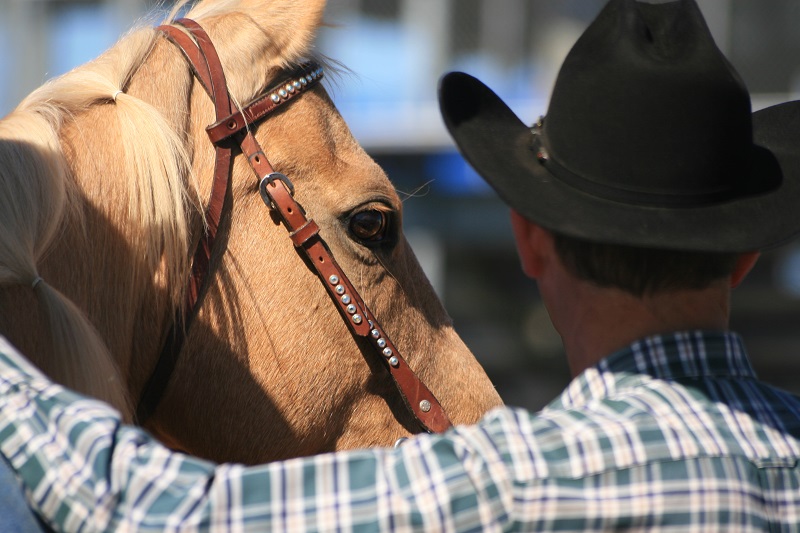
Regardless of the economic climate, the recreational rider values a well-trained horse with a good temperament.
Economic Climate
When assessing the value of horses for sale today, it bears repeating that trained horses and those that are sound performers hold their value, while grade or undertrained horses are still pegged as low value prospects. Really though, this would apply in all economic climates.
“There is, and always will be, a sliding scale in the price of horses,” said Burwash. “Price is related to training, temperament, and tolerance for recreational riders. The more the training, the better the temperament, and the more tolerant to our inadequacies to always give the correct message to the horse on what we want to do, the more valuable the horse is. This is not talking about elite performance horses but recreational horses which make up the heart of the industry.”
Burwash added that what he sees is the law of supply and demand at work in the horse industry. “We are now seeing prices increase for horses that meet the requirements of people because the numbers are down and the economy is turning around. It should probably be recognized that breeders producing average horses will not be profitable and sustainable in the long run.”
Allan Ehrlick, President of the Ontario Equestrian Federation and recipient of the 2011 Equine Canada Volunteer of the Year Award, factors in the dramatic rise in the value of the Canadian dollar to the supply and demand equation.
“It was wonderful when the Canadian dollar was around 65 cents to the US dollar and Americans would come up here and buy all sorts of horses,” he said. “It was a great market. But as the Canadian dollar got stronger and the economy (here) got better, that ended because now it’s dollar for dollar. It’s a very difficult situation because of the economy. People still have no trouble selling the expensive horses but it’s the ones that are $30,000, $20,000, or $5000 that are difficult to sell right now. The cost of living has gone up, feed is expensive, and (so is) the cost of fuel.”
“Price reductions are most evident in the lower price end of the market,” wrote Evans. “Selling prices for horses to the pleasure-riding market were down 39 percent nationally in 2010. In key markets for the pleasure riding sector – BC, Alberta, Ontario, and Quebec – reported prices were down 56 percent, 61 percent, 49 percent, and 61 percent respectively.”
Plummeting values have not only been driven by the economic malaise but the rising overhead cost of keeping horses that Ehrlick referred to. The report states that the cost to keep a horse has increased by more than 70 percent between 2003 and 2010. The national average jumped from $1500 annually to keep a horse in 2003, to $2700 per horse in 2010.
“Overall, yes, that would be a fair representation of costs for keeping a horse,” said Coughlin. “Regionally throughout BC costs may differ but overall those costs have increased within that time frame.”
Horse ownership costs, though, are relative to the animal’s use.
“Cost of ownership has always been a deterrent to participating in our industry,” said Burwash. “(But) I also question that this cost of ownership has doubled in seven years. Feed costs are cyclical in Alberta as with most agricultural products. In my opinion many horse owners could reduce their cost of ownership without compromising the care of their horse.”
MacKenzie also felt that in addition to the rising costs of ownership, another cost that has really hurt the horse industry in the Maritimes is the cost of showing and insurance.
“I believe in Atlantic Canada the insurance industry and Equine Canada have destroyed much of the foundation that built the equine industry,” she said. “The fun shows and family oriented events that put kids on ponies and horses, and in the show rings, have become just memories of the past. Insurance costs, let alone show approval fees, etc., have made these foundation shows impossible to run or host. All that remains are the higher level, higher priced shows. Equine Canada won’t allow certified judges to judge fun shows so there is no place for a kid to start competing unless they have a whole lot of money to spend. After parents pay for board, lessons, and trucking they have to pay Equine Canada dues, entry fees, coaches, farriers, vets, etc. Trucking costs are increasing dramatically. Young families, often with one parent, just can’t afford a young equestrian.”
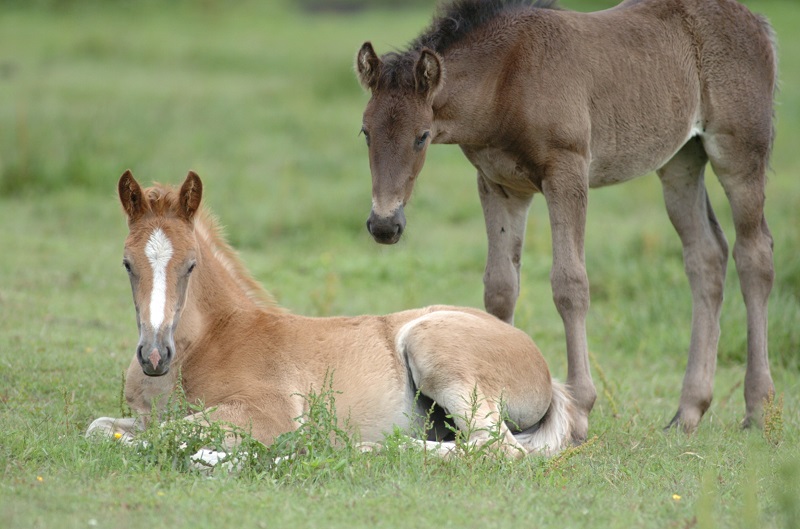
Annual foal production decreased by 50 percent from 2003 to 2010. Photo:Robin Duncan Photography
The increased cost of keeping a horse is proportionate to the rising number of horses on the market. And with the closure of horse meat processing plants in the U.S., horses were imported into Canada for sale at auction, further flooding the market with saleable horses and driving horse prices down simply from over supply.
The poor market has clearly impacted breeders as they work to keep up with a changing industry. The report stated that annual foal production has decreased by 50 percent in the 2003 to 2010 period, and that it was expected to continue to decrease in 2011.
MacKenzie has observed that horse owners are exercising caution in what they are buying and breeding. “Breeders are choosing to breed less, and fewer breeders are maintaining stallions. AI [artificial insemination] is on the increase.”
The report states that of the 135,000 horses sold since 2008, 80 percent were sold through private sale, and 35,000 have been sold to export markets. And 18 percent of sellers reported that prices were higher in 2010, while 40 percent reported lower prices.

With the shift in horse ownership to an aging demographic, the 29 percent decrease in the number of owners making their horses available for entry level activities, and the 50 percent drop in entry level participation, finding affordable and sustainable ways to attract young people is key to the industry’s future. Photo: Robin Duncan Photography
Retooling for the Future
MacKenzie stressed the need to bring back the grassroots affordable fun shows with Equine Canada supporting them with reasonably priced insurance and fees, and qualified, affordable judges. She also stressed that provincial governments need to remove the tax from horse feeds and support the industry “they call agriculture one time and companion animal the next.”
That thought is close to Coughlin’s heart. She believes that if her “wish list” ever came to fruition, we would have a healthy, thriving horse industry! Her wish list includes:
- That horses be considered livestock under the Ministry of Small Business and Revenue;
- That the horse sector be considered equivalent to other agricultural commodities in British Columbia with regards to taxation;
- That income from boarding, training, stud fees, and stallion semen sales be included as qualifying income for farm classification.
“We need to encourage those not currently involved with horses that it is possible for riding and driving to be an affordable family-oriented hobby,” said Coughlin. “The average person is four to five generations removed from an agricultural background – but people like horses! The industry needs to capitalize on this and rebrand itself as an investment in a healthy and wholesome lifestyle for all ages and physical abilities. This can be done through broader communication, educational resources, accessible competition, and preserving trails to ensure outdoor recreational opportunities.”
“The number of people riding horses that belong to others has dropped from 647,000 in 2003 to 304,000 in 2010,” wrote Evans. “There has been a 29 percent decrease in the number of owners making their horses available for entry level activities in the 2003 to 2010 period from 38,000 owners in 2003 to 27,000 in 2010.”
Ultimately this contributed to the fact that entry level participation in the industry was down by approximately 50 percent in 2010 as compared with 2003, although in certain parts of the country participation numbers may stabilizing.
MacKenzie commented that owners do not tend to lend their horses to encourage young riders into the industry because insurance costs are so prohibitive. Interestingly, that trend was also noted in the report.
“The interest is still there,” acknowledged Coughlin. “But unless you know someone directly involved in horses it is difficult for the average person to know where to begin. Horses offer a healthy, vibrant lifestyle that can be affordable for a family and we need to get that message out.”
She added that leasing, lessons on school horses, and trail riding are some options. In BC, local and schooling competitions are doing very well. Participation numbers are now steady to increasing.
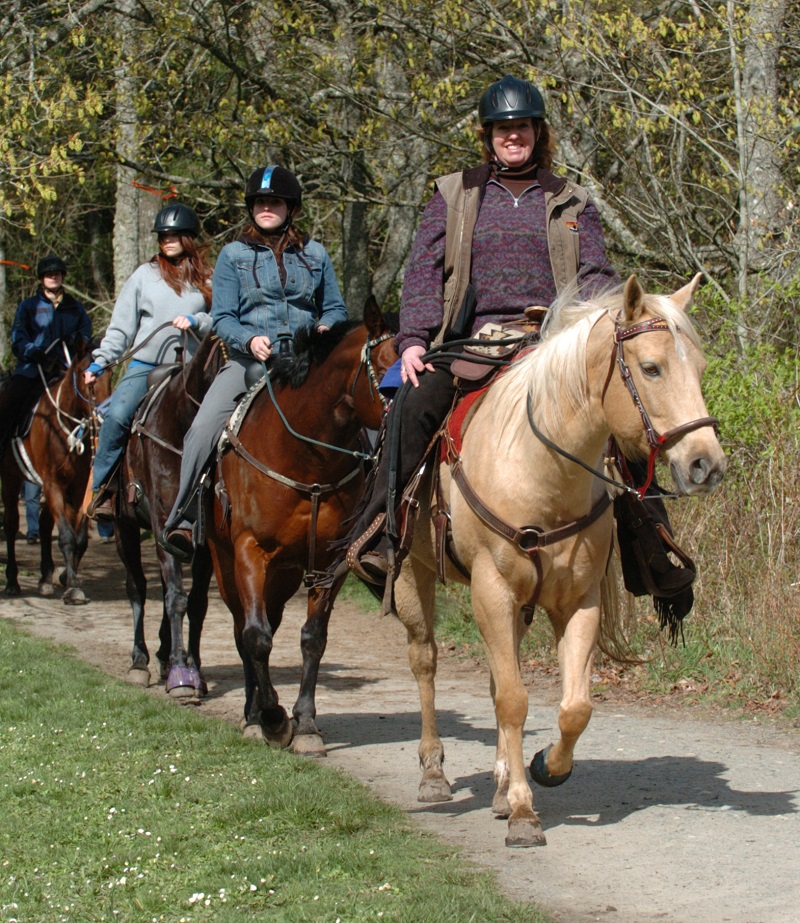
The industry needs to rebrand itself as an investment in a healthy and wholesome lifestyle for all ages and physical abilities. Photo: Robin Duncan Photography
The report stated that the industry has proven itself adept at adjusting business models to target breeding-to-market-use over the past decade. It now needs to retool itself to target new youth markets in an affordable and sustainable way.
“Activities are going to need to be more inviting and fun for young people or they will not come into the horse industry,” said Burwash. “If the horse industry is going to grow and maintain itself we must concentrate on bringing youth into horse activities. Studies show that if people are going to become involved with horses in their lifetime they must be exposed when they are young. Associations are going to have to put more emphasis on fun youth activities to ultimately retain memberships and participation.”
But drawing in children today is perhaps even more challenging given the immense competition with digital media, the wide range of entertainment available, and the huge financial demands on families with rising household costs and, more often than not, both parents working to make ends meet. Families with several children find themselves stretched by both time and money when it comes to meeting the needs of their children’s diverse interests.
“We are all going to need to put in more time, effort, and money to attract new people,” Burwash stressed. “There needs to be more easy access points to becoming involved. (While) our industry is not inexpensive to participate in, we are going to need to show value for the investment. We are going to have to think outside the box and change some of what we are doing to become inclusive as opposed to being exclusive.”
So what does the future hold for the horse industry?
“I would say, on the up side, the industry has a large pool of horse knowledge to draw upon with equestrians, much like Ian Millar, staying in their industry longer and being more educated and knowledgeable than the generations past,” said MacKenzie. “There is more research and science on horses available now than before. On the down side, this increased knowledge and lifelong passion needs a base where it can be passed along. We have a large pool of boomers and equestrians who can pass along experience and knowledge, provide a volunteer base, but [they] also need to help youth with opportunities.”
Despite the rising cost of keeping horses, Evans wrote that one of the most significant changes in the 2010 industry profile was the addition of more than 79,000 horse-owning households since 2003, which represents a 54 percent increase in the number of horse owners in Canada.
However, if horse ownership has shifted to an aging demographic, people will eventually retire from the industry. According to the report, only 19 percent expect to own more horses in five years’ time. Fully 30 percent of the owners questioned expect to own fewer horses, some expecting to downsize within a year. The decrease in horse ownership over the next five to ten years would result in shrinkage in the size of the horse industry.
The sustainability of the equine industry is dependent upon the need to recognize the potential for growth, and to nurture it by drawing in new participants and revitalizing the customer base. The Canadian economy is a fluid, changing dynamic. With vision and focus, horse owners and horse lovers are capable of re-tooling their industry for an exciting ride into the future.
Main photo: Courtesy of Troxel - Although individual horses are often used for more than one type of activity, pleasure riding or driving was identified as the primary use for 172,000 Canadian equines.



